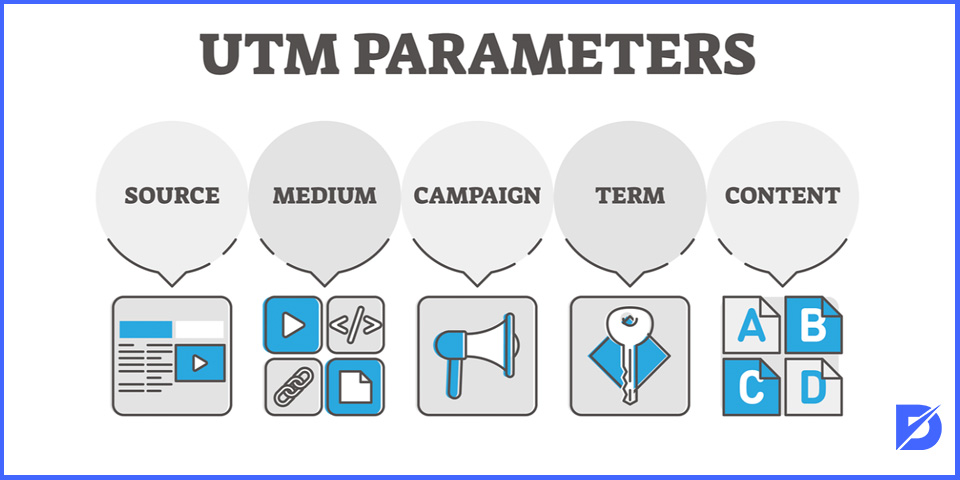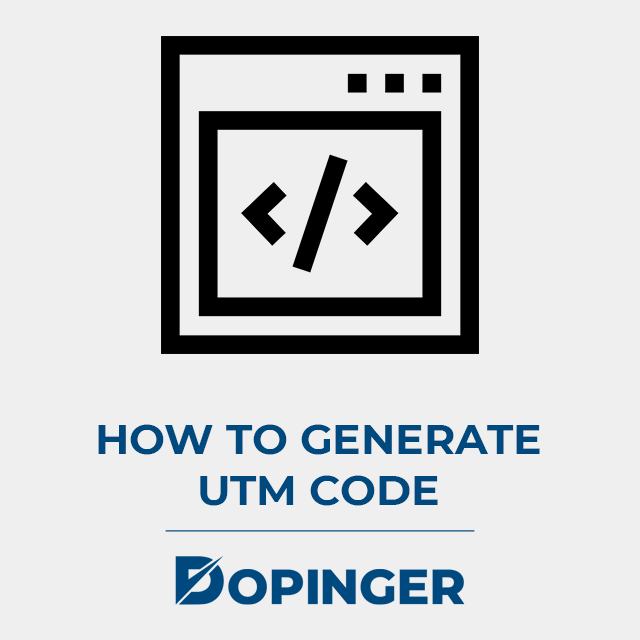After creating a marketing strategy, it is necessary to use some methods to achieve success while working in this direction. For example; It is important to collect various data in order to understand the target audience as well as possible. The tools that will provide you with this and similar data are called UTM. By learning much more about UTM parameters, you can effectively implement your marketing strategy.
Measurement is the interpretation of transactions in digital media with numerical data. In this way, you can make the most accurate performance analysis and make improvement decisions. Using UTM code, which helps to measure digital performance, is a very important tool for this.
What Is UTM?
UTM means “Urchin Tracking Model.” Its name comes from Urchin Software Corporation, the software company from which created it. Urchin is popular in the industry as software that provides web analytics for marketers in general. UTM is rapidly spreading as a part of these studies.
Urchin Tracking Module, shortly UTM, is a link code that people use to track the traffic and effectiveness of both digital b2b marketing and digital b2c marketing campaigns. It is very important to measure and analyze the results for the efficiency of campaign work in digital marketing. Thanks to UTM parameters, the impact of campaigns can be easily measured and reported accurately.
UTM parameters in a link (URL) define the characteristics of the traffic that the marketing campaign provides to a particular website. Google Analytics URL Builder, Chrome extensions, or automated UTM generator tools can be used to define UTM parameters to links.

What Does UTM Do?
It is possible to obtain various information about visitors to the website with UTM parameters. With these tracking codes given to the links, a lot of subjects can be distinguished about the behavior of the users in the campaigns, the device they use, the mobile phone operating system, and even where they click on the image on the page. In this context, the bounce rates or conversion rates of visitors can be easily reached.
Most of these types of analysis can also be tracked with Google Analytics. But, using UTM code for clearer and measurable results help better analyze the source of traffic. If you want to carry out a really powerful digital marketing campaign and advertising activity, you will definitely need the parameters offered by UTM. One of the advantages of these parameters is the opportunity to monitor the source of income.
Why Should You Use UTM Parameters?
There are many benefits people can have from using UTM code. One of them is to minimize the margin of error in the strategies followed. Conversions are easy to understand, thanks to the UTM builder. Some conversions, such as conversions from social media channels, do not cost anything.
You can get a lot of conversions from a very small niche website where you have no expectations. This is where the UTM tag comes into play, and it is easier to measure which channels from which conversions are performing much better. Therefore, when analyzing costs, it can be understood which of Instagram, a niche blog, or big news channel is more functional.
In addition, UTM provides several benefits in reporting. While preparing a report, you can easily show which campaigns are working, and the investment returns to your employer or customer.

How to Generate UTM Code
There are 5 types of UTM parameters or codes that you need to add to your URL while creating a UTM link. Thanks to these UTM parameters called Medium, term, content, source, and campaign, it becomes easier for you to narrow the tracking information of the visitors to your website and the traffic generated on your website. This helps you reach the information you need more easily. You should not forget to add UTM code to your campaigns.
Steps to Generate UTM Code
Here are what you need to generate UTM code:
- Source: Thanks to the “Source” tag, it becomes easier for you to know from the platforms such as LinkedIn, Twitter, Facebook, newsletter, or search engine that your web page traffic came from. For example, the link is as follows: & utm_source = facebook
- Medium: With Medium, you can understand what kind of traffic your visitors come from on your site. Channels that direct visitors such as social media, brand partnerships, pay-per-click ad types, organic visits, banners, or e-mails, are available. Ex: & utm_medium = e-mail
- Campaign: Campaign is for keyword analysis. It can be used for the promotion of certain products. In addition, the performances of the campaigns that result in traffic can be monitored. Example: & utm_campaign = name Instead of the word “Name,” a slogan or a campaign name can be used.
- Content: A type of link used to watch certain types of content from a common source or medium. Content is for A / B testing with targeted content ads. Thanks to this, the call-to-action can be tested. Links with the same URL can be differentiated. Utm_content is for to find out which connection is used. Example: & utm_content = click-here
- Term: Utm_term is used for various keywords in pay-per-click ads. In this way, it can be seen what people who click on the ad are actually looking for. However, it is necessary to use products and categories. Example: & utm_term = tennis-ball

When Should You Use UTM Parameters?
It may be much more beneficial for you to follow some marketing studies privately. You should definitely use UTM parameters in marketing efforts here:
Guest Blogging: Content is important. If you want to measure the performance of a guest blogging, you should, of course, use traceable URL addresses and control the traffic these articles bring to you.
Social Media: You may be wondering how many people clicked on the links you shared on your profile. For this, you can include trackable links that you will use in your social profile.
E-mail: Advanced e-mail marketing programs may give you opportunities to track your e-mail campaigns, but using traceable URL addresses can make all of these easier.
Promotions: The easiest way to get traffic and generate more sales is with a large audience such as bloggers, Instagram influencers, news sites, and YouTube publishers. If you want to do this, you should use traceable URL addresses to measure the performance of the campaign.
Ads: If you are going to advertise on certain sites, you should use trackable links in ad links. In this way, you can easily measure the effectiveness of advertising work. If you measure which one performs better, you can develop more useful methods for future advertising work.
Importance of UTM Parameters
UTM parameters not only differentiate the digital content marketing strategy but also provide the opportunity to understand your campaigns better and use them more efficiently. Using UTM codes correctly helps you analyze the traffic source in detail. So, adding UTM codes to get measurable quality results from your campaigns allows you to measure the performance of your work and plan in line with these results. For a fully measurable campaign, you need to add UTM parameters to all individual links. If you do not add the UTM codes, you cannot measure which of the running campaigns you get the best conversion.
Frequently Asked Questions About
UTM parameters are codes that the URL to help you track the performance of the website or campaign. UTM means “Urchin Traffic Monitor.”
UTM parameters allow you to obtain important information about your traffic. It allows you to increase your sales and get efficiency from your marketing strategies.
There are 5 types of UTM parameters or codes that you need to add to your URL while creating a UTM link. These are Source, Medium, Campaign, Content, and Term.
After you’ve installed Google Analytics on your website, go to Google’s Campaign URL Builder page. Enter the website URL and campaign information.
URL means Uniform Resource Locator. Link addresses on websites are URLs. The URL indicates the location of the web page or internet resource.





No comments to show.